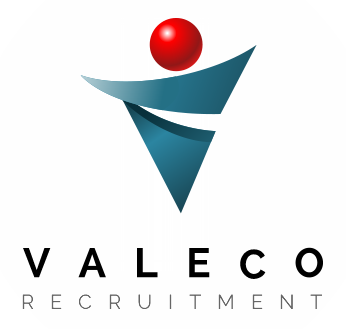4 Steps To A Great CV
In 4 steps to a great CV you will find help and information on how to turn your CV into a marketing tool that will grab a hiring managers attention.
The guide is arranged in 4 steps. We would advise that you also send your CV with a cover letter. Further reading on this can be found at the bottom of the page.
Step 1 - Know your audience
This is essential. For most jobs the employer will provide a job description and person specification indicating the skills, experiences and qualifications that they require. Every job description is unique to that job. Employers want to feel as though your CV has been written for them and only them and is clearly tailored to their specific job description.
It’s not just about the role – you will need to demonstrate you understand the company and its industry sector. One of the most important things you should do before starting to write your CV is to research the employer. There are many easy ways to do this including visiting their company website (understanding of what the company does and their core values), looking at their social media pages (will give you a better idea of company culture) and Google (this will show up key information such as news articles, interviews and any recent changes in the company)
Step 2 - Know yourself
- Identify - What the employer wants
- Evidence - Gather your examples
- Apply - Use your examples to demonstrate impact and achievements
Step 3 - CV structure
Name and contact details - Placed at the top so nobody misses them.
The important details you need to remember and include are:
- Your name
- Your email address (use a professional looking one - no nicknames)
- Your telephone number
- Maybe your LinkedIn profile if you have one
- Take up minimal space with your contact details to save plenty of room to write the rest of your CV.
Profile / Personal statement
When apply for any job, your CV will usually land in the inbox of a busy recruiter or hiring manager. They will probably be looking through lots of other CVs, so you need to impress them quickly. In order to grab their attention and ensure that they read your CV in full. you must hook them with a punchy introductory paragraph at the top – known as a CV profile or personal statement.
Something like this:
'Motivated Administrative Assistant with over 8 years of experience administrative experience in diverse office environments. Proficient in providing administrative support to executives and performing office and clerical duties. Expert in preparing correspondence, revising documents, distributing mail and maintaining the database. Expert-level proficiency with Microsoft Word and Excel'
Remember to sell yourself in your profile – you only have a few seconds to get your message across, so write a persuasive paragraph that tells people why they should hire you – don’t be afraid to brag a little, and tailor your profile to the jobs you are applying for.
Core skills section - Create a snapshot of your abilities
A core skills section is a bullet pointed list which highlights your most important skills and knowledge for the roles you are applying for. It creates a very quick snapshot of your abilities – so that readers can get a great idea of your talents from just a quick glance.
Here is an example:
- Diary management
- Client relationships
- database creation
- Staff training
- Proficient in the use of Microsoft Office, including Excel, Word, PowerPoint
- Record and office inventory management
Work experience - Prove the impact you make in the workplace
Don’t worry if you have no direct work experience yet - You can always include school projects, work placements, voluntary work – or any thing else you can think of.
You should list your work history in reverse chronological order – starting with you most recent role and moving down the page as far back as necessary.
Within each of your role descriptions, you should aim to demonstrate who you have worked for, the skills you have used and how your work has benefited the employer. Start with an active verb e.g. Organised, Arranged, Created, Implemented and then move into the responsibility or task, the action you took and the skill you utilised or developed. Where possible finish with a result, this doesn’t have to be quantifiable e.g. increased sales by 10% - it could be about the impact your contribution had on a project or team or something you personally achieved.
Here is an example:
August 2014 - Present
Office Administrator
XYZ Company Ltd
Assisting in all administrative processes within the office and offering secretarial support to various departments to ensure effective running of the office.
- Answering incoming calls in a professional manner
- Managing calendars of senior team members
- Following standardised company procedures relating to all aspects of Office performance
- Maintaining suitable and sufficient office stationary to all departments
- Updating databases with confidential and relevant information
- Organising meetings and confirming attendance by email where applicable
- Created new system for receiving and filing physical mail and fax documents that improved efficiency and eliminated delays in time-sensitive issues.
- Awarded Employee of the Month twice and received highest possible score during the annual performance review
Education and qualifications
The level of detail you include in your education will depend on your level of experience. If you are a junior candidate with little or no experience, then you will need to include plenty of detail in your education section. Listing all of your qualifications from high school to University – and even detailing modules and projects undertaken where they are relevant to the jobs you are applying to.If the role you are applying requires a specific qualification such as a Financial qualification or HR qualification then make sure this is listed here. You may also want to add this into the core skills section so it stands out at the top of the page.
Hobbies and interests - Only add if you want to
This can be a useful way to convey subliminal messages about your skills and competencies. (E.g. Regular Sunday football shows commitment, dedication, stamina and teamwork). Hobbies and interests also give the employer insight and allow them to appreciate your personality and passions.
Step 4 - CV Checklist
Could an employer scan through your CV and immediately see what they are looking for?
Remember:
- Correct spelling and grammar
- Name and contact details at the top
- No unexplained long gaps in education or experience
- All text neatly aligned according to set margins/tabs
- Bullet points used rather than paragraphs of text
- Font size 11 or 12 and one style (Arial, Calibri, Georgia)
- One method of emphasis for headings (Bold, Italics or Underlining)
- Clear rather than crowded - plenty of white space
- No “protected characteristics” i.e. date of birth, gender etc
Good luck!



